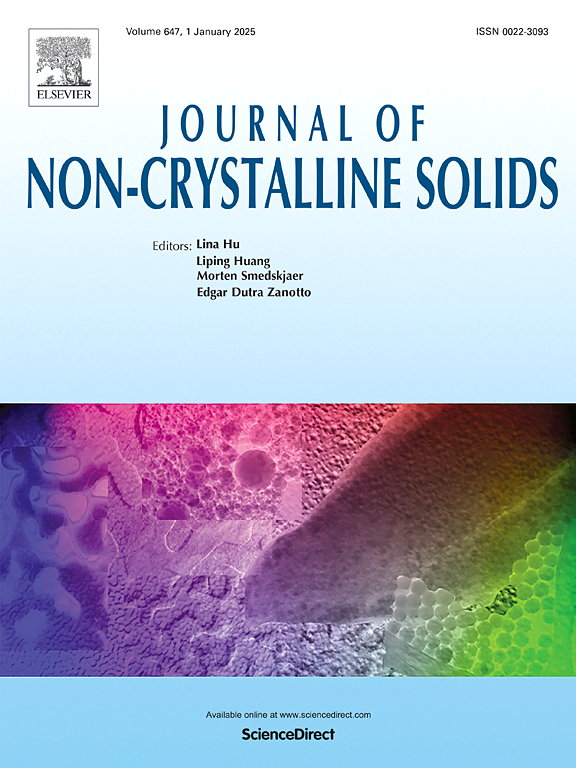Sliding wear behavior and mechanism of Zr-based bulk metallic glasses and metallic glass matrix composites
IF 3.2
3区 材料科学
Q1 MATERIALS SCIENCE, CERAMICS
引用次数: 0
Abstract
The cross-scale tribological mechanism of Zr-based bulk metallic glasses and its composites was studied. It is found that the wear rate of Zr-based bulk metallic glasses is lower than that of Zr-based metallic glass matrix composite, which is due to the high hardness characteristics of Zr-based bulk metallic glasses and the protection of the wear oxide layer, while the Zr-based metallic glass matrix composite is due to the toughening phase (55 % volume fraction). The hardness mismatch (ΔH = 2.56 GPa) of the matrix causes interfacial stress concentration and increases the wear rate. The wear mechanism of Zr-based metallic glass matrix composites gradually changes from plastic deformation to oxidation-fatigue composite mechanism with the increase of the load. Nano-scratch experiments show that the Zr-based bulk metallic glasses exhibits sawtooth friction fluctuation due to shear band activation, while the Zr-based metallic glass matrix composite produces friction oscillation due to the biphase heterogeneous structure. This study provides a theoretical framework for interface regulation and multiphase synergistic strengthening for the design of wear-resistant bulk metallic glasses.
zr基大块金属玻璃和金属玻璃基复合材料的滑动磨损行为及机理
研究了zr基大块金属玻璃及其复合材料的跨尺度摩擦学机理。研究发现,zr基大块金属玻璃的磨损率低于zr基金属玻璃基复合材料,这是由于zr基大块金属玻璃的高硬度特性和磨损氧化层的保护,而zr基金属玻璃基复合材料是由于增韧相(55%体积分数)。基体的硬度失配(ΔH = 2.56 GPa)导致界面应力集中,增加了磨损速率。随着载荷的增加,zr基金属玻璃基复合材料的磨损机制逐渐由塑性变形转变为氧化疲劳复合机制。纳米划痕实验表明,由于剪切带激活,zr基大块金属玻璃呈现锯齿状摩擦波动,而zr基金属玻璃基复合材料则由于双相非均相结构而产生摩擦振荡。本研究为块体耐磨金属玻璃的界面调节和多相协同强化设计提供了理论框架。
本文章由计算机程序翻译,如有差异,请以英文原文为准。
求助全文
约1分钟内获得全文
求助全文
来源期刊

Journal of Non-crystalline Solids
工程技术-材料科学:硅酸盐
CiteScore
6.50
自引率
11.40%
发文量
576
审稿时长
35 days
期刊介绍:
The Journal of Non-Crystalline Solids publishes review articles, research papers, and Letters to the Editor on amorphous and glassy materials, including inorganic, organic, polymeric, hybrid and metallic systems. Papers on partially glassy materials, such as glass-ceramics and glass-matrix composites, and papers involving the liquid state are also included in so far as the properties of the liquid are relevant for the formation of the solid.
In all cases the papers must demonstrate both novelty and importance to the field, by way of significant advances in understanding or application of non-crystalline solids; in the case of Letters, a compelling case must also be made for expedited handling.
 求助内容:
求助内容: 应助结果提醒方式:
应助结果提醒方式:


